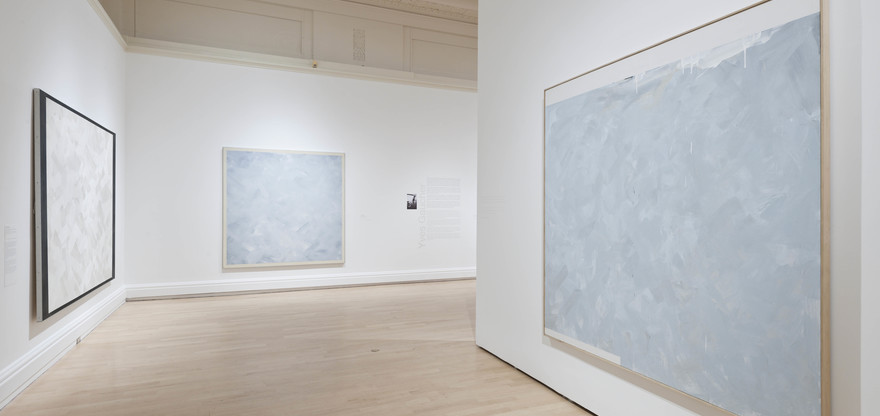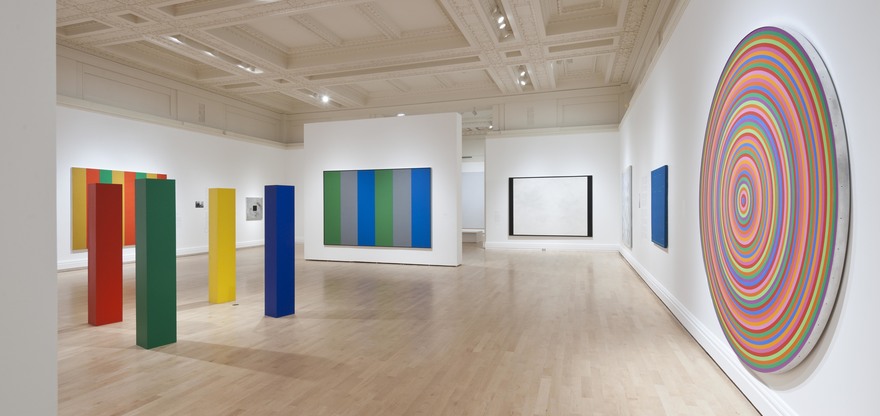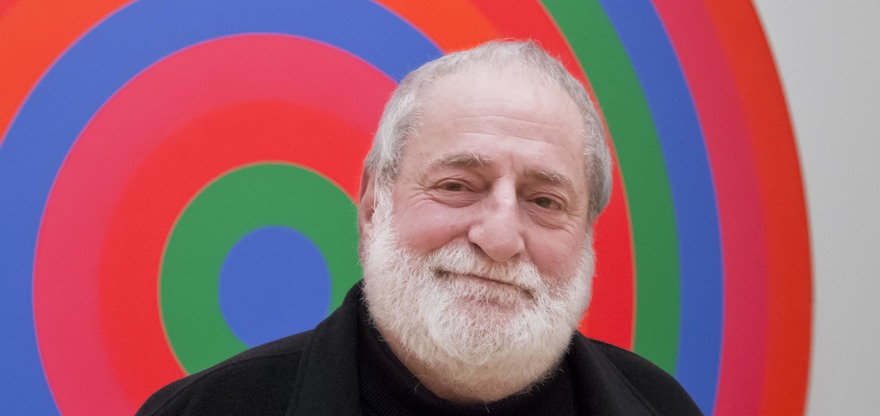The Musée national des beaux-arts du Québec and the Varley Art Gallery of Markham, Ontario joined forces to conceive and organize the exhibition The Plasticiens and Beyond: Montreal 1955-1970. Consisting of more than 70 works – primarily paintings, but also works on paper and a few sculptures, in addition to archival documents – this exhibition was the very first devoted to the ideas of the Plasticien movement in Montréal between 1955 and 1970.
In addition to this look back, the exhibition highlighted the decisive contribution throughout this period by artists such as Guido Molinari, Claude Tousignant, Yves Gaucher and Charles Gagnon to the geometric abstraction underway in both Paris and New York. The exhibition brought the Plasticiens’ journey back to life, from their beginnings to the explosion of the “post-Plasticiens” on the international scene in the mid-1960s.
From the “Plasticiens” ...
In the wake of the revolution set in motion by the Automatists in the late 1940s, a veritable second avant-garde soon emerged in Montreal. In 1955, an initial group of artists – Jauran (Rodolphe de Repentigny), Louis Belzile, Jean-Paul Jérôme and Fernand Toupin – showed their work at the café-restaurant L’Échourie and adopted the name “Plasticiens”. On this occasion, they also published a manifesto which, in response to the spontaneous exuberance of Automatism, proclaimed the need for a geometrical abstraction founded primarily on stylistic expurgation and the arrangement of the plastic elements. This aesthetic approach overlapped with ideas being developed at the same time by Fernand Leduc as he pursued his quest for geometric order strictly determined by a state of balance amongst the various formal elements.
In 1956, however, Guido Molinari and Claude Tousignant took these ideas to more extreme lengths in respective solo exhibitions of hard-edge paintings whose surface was defined in terms of their flatness and non-referential quality. With Jean Goguen and Denis Juneau, they were quickly identified as the second group of Plasticiens. In 1959 this group, with Belzile, Leduc and Toupin, showed their work in the exhibition Art abstrait at the École des beaux-arts de Montréal, whose catalogue took the form of a manifesto in favour of geometric abstraction.
To the “Post-Plasticiens”
In the early 1960s, Molinari and Tousignant took the project even further through the use of pure colour as a structural element and source of energy commanding considerable visual activity on the part of the viewer. The principal elements of this “post-Plasticien” concept were shared and reinterpreted by Yves Gaucher and Charles Gagnon respectively. Through a number of masterful works which left no doubt as to their specificity and authority, these four cutting-edge figures made a considerable contribution to asserting a singular approach to abstract painting.
This occurred in a context when, with the first exhibitions of post-painterly abstraction, Op Art and minimalism, hard-edge painting was at the centre of a broader debate in North America and internationally. The Plasticiens and Beyond: Montreal, 1955-1970 highlights this outstanding stage in the history of abstract painting in Québec in order to gauge its reach on an international scale.
The exhibition The Plasticiens and Beyond: Montreal 1955-1970, co-produced and circulated by the Musée national des beaux-arts du Québec and the Varley Art Gallery of Markham, was conceived by Roald Nasgaard and curated by Roald Nasgaard, head curator at the Art Gallery of Ontario from 1978 to 1992, and Michel Martin, curator of contemporary art at the Musée national des beaux-arts du Québec from 1978 to 2008.





Give us your feedback